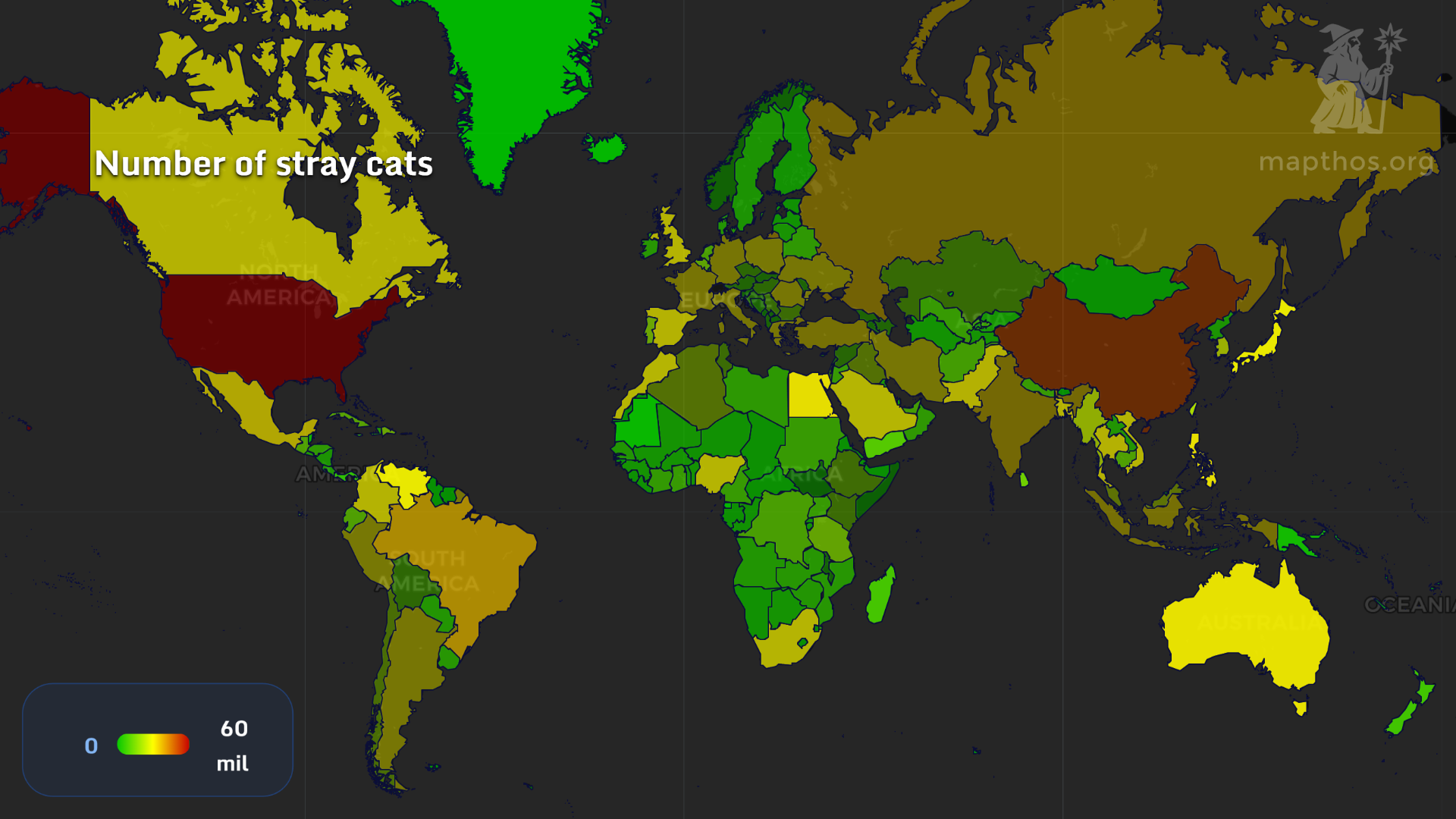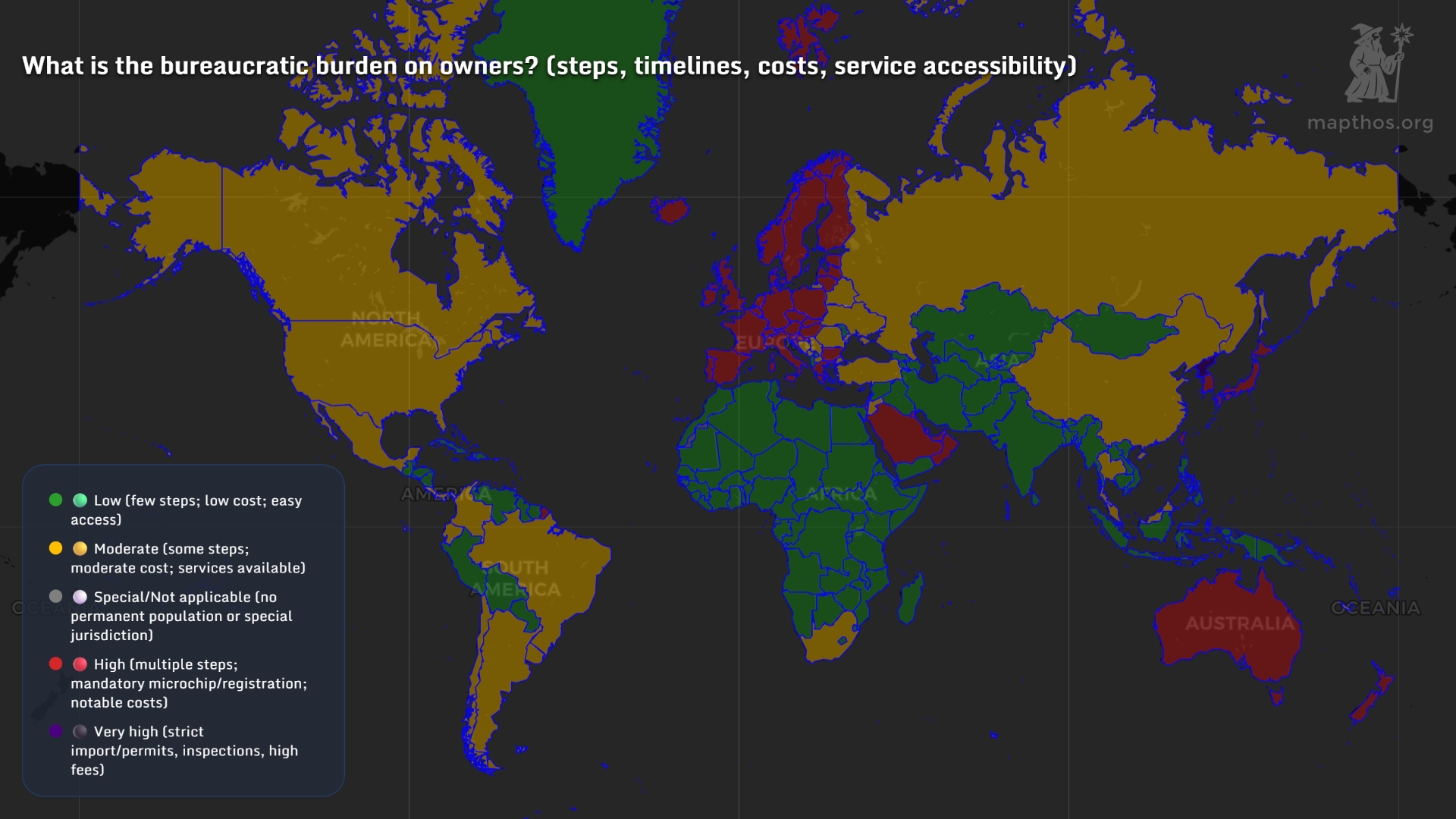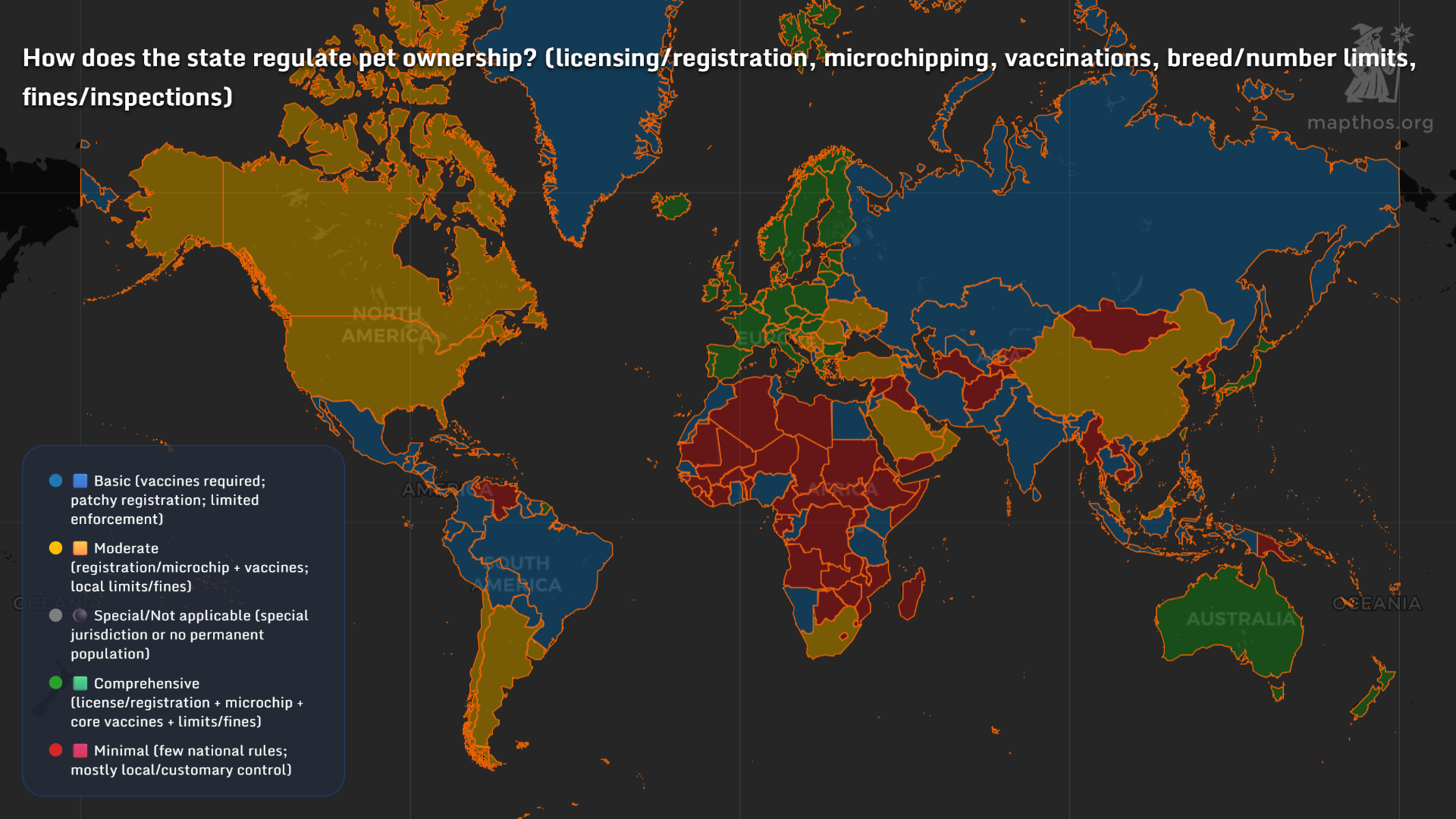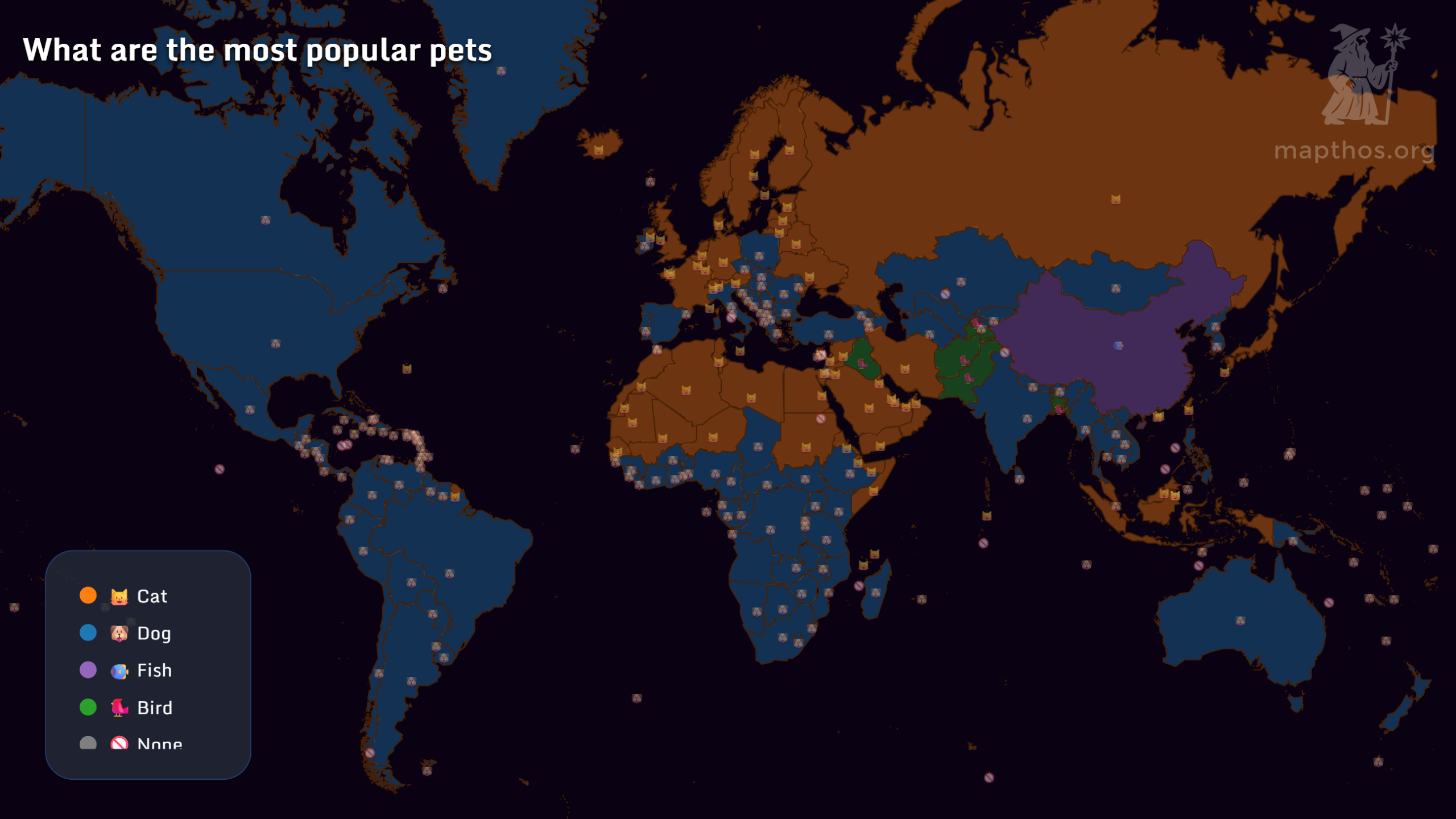🐾 The Geography of Pets: How the World Lives with Its Animals (2025)

We often say “a dog is man’s best friend,” but geography tells a more complicated story. In 2025, the relationship between humans and their pets is not just emotional — it’s economic, cultural, and even political. Using Mapthos’ global datasets, we mapped how stray populations, regulations, and adoption trends vary across the planet.
🐕 Stray Dogs: A Silent Urban Population

India alone is home to over 35 million stray dogs, making it the epicenter of the world’s canine overpopulation. In contrast, Western Europe and Japan maintain near-zero stray rates thanks to mandatory sterilization and microchipping laws. Latin America, the U.S., and parts of Eastern Europe sit in the middle — visible yellow zones where control efforts are growing but still incomplete.
🐈 Stray Cats: Masters of the Night

Cats tell a different story. The United States and China lead in stray cat populations — over 60 million combined. Australia and parts of Europe also report significant feral cat numbers, often linked to environmental impacts on native wildlife. In Africa and the Middle East, fewer strays appear, largely because fewer households keep cats as indoor pets in the first place.
🏛️ Bureaucracy and Burdens

Owning a pet isn’t equally easy everywhere. Scandinavia and Australia show the highest bureaucratic burden — multiple steps, costly registration, and strict microchipping. Africa and much of Asia, on the other hand, are colored green, representing low-cost, low-regulation environments, where pet ownership is culturally informal.
⚖️ State Regulation of Pet Ownership

Here’s where governance meets empathy. Australia, the U.K., and parts of the EU apply comprehensive systems — licensing, vaccines, fines, and breed limits. Meanwhile, South Asia and much of Africa rely on minimal or traditional controls, often managed at a village or municipal level.
🐶 Where Do Dogs Come From?

A dog’s journey into a household reflects local ethics and economy. In Europe and North America, adoption and breeders dominate. Across Asia, pets are often gifts or family transfers, while in Africa and Latin America, many dogs come from rescues or streets, showing a mix of compassion and necessity.
🐱 And Cats?

Cat acquisition is slightly more uniform: North America prefers shelter adoptions, while Eastern Europe and Asia favor family networks or street rescues. Australia stands out again — strict adoption-only policies have reshaped its pet culture.
🌍 Global Favorites: Cats Rule the World

Globally, cats are the most popular pets in 2025 — leading in Europe, Russia, and South America. Dogs dominate Africa and the Pacific, while fish hold unexpected popularity in China and Southeast Asia. Behind these colors lies a reflection of urbanization, lifestyle, and how humans project companionship into their environments.
In the end, these maps are less about animals and more about us — about how we organize care, affection, and responsibility in our societies. From the stray-filled streets of Mumbai to the microchipped suburbs of Melbourne, the geography of pets tells the story of civilization itself.
👉 Explore more at app.mapthos.org
See the world. Map better. Dream big. 🌍✨